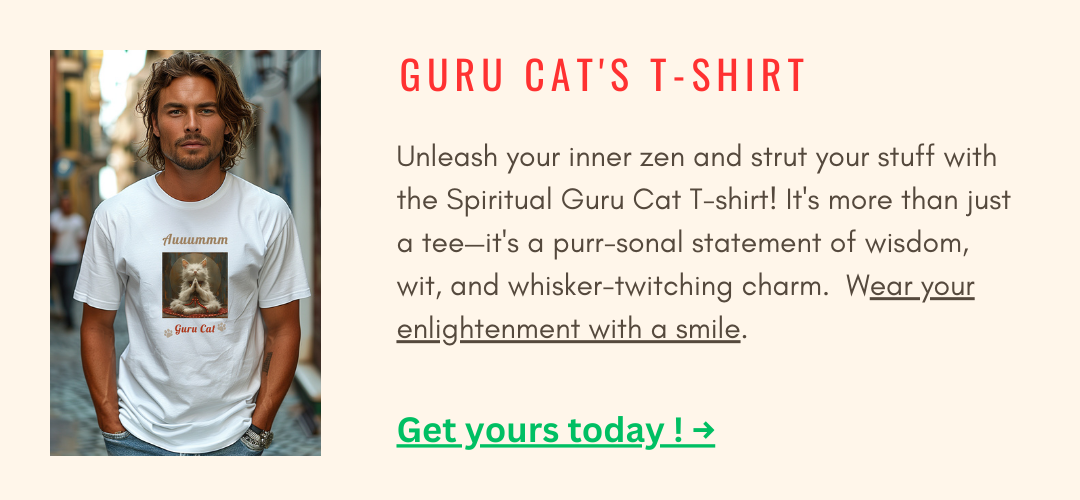The Art of Cat Communication: Building Relationships
The Language of Meows: Effective Communication Skills
The Language of Meows: Effective Communication Skills
Are you aware of the fascinating world of feline communication ? And how we can learn from our furry friends to improve our own skills in this area. So, get ready to unleash your inner cat and master the art of meowing!
Have you ever wondered why cats meow? Contrary to popular belief, cats don’t meow just to annoy their humans (although that may be a bonus for them). Meowing is actually a form of communication for cats, and they have different types of meows for different purposes. From the demanding meow for food to the pleading meow for attention, cats are masters at getting their point across without saying a word.
What can we learn from our feline friends when it comes to effective communication skills? Firstly, pay attention to body language. Cats use their tails, ears, and whiskers to convey messages, so make sure to observe the non-verbal cues of others when communicating. Remember, actions speak louder than words, just like a cat’s purr can say a thousand words without making a sound.
Another important lesson we can learn from cats is the power of active listening. Cats are always attentive to their surroundings, picking up on subtle cues that others may miss. So, next time you’re in a conversation, try to be fully present and listen with curiosity, just like a cat tracking a mouse. You may be surprised at how much you can learn by simply tuning in to what others have to say.
Don’t be afraid to speak up and assert yourself when needed. Cats are not shy about expressing their needs and desires, and neither should you be. Whether it’s asking for help, setting boundaries, or expressing your emotions, remember to meow with confidence and clarity. Just like a cat claiming its territory, own your voice and communicate with purpose.
Embrace your inner cat my friend and purr-fect your communication skills by learning from these wise and whiskered creatures. By mastering the language of meows, you’ll be well on your way to becoming a more emotionally intelligent and effective communicator in all areas of your life. Meow’s the time to start!
Curiosity Didn’t Kill the Cat: Embracing Curiosity in Relationships
Ah, curiosity! That insatiable desire to know more, to explore, to discover. As humans, we often underestimate the power of curiosity in our relationships. But let me tell you, my fellow feline enthusiasts, curiosity didn’t kill the cat – it made us who we are today! Embracing curiosity in our relationships can lead to deeper connections, better communication, and a whole lot of fun along the way.
Think about it – when was the last time you asked your partner a truly curious question? Not just the usual “how was your day?” but something that sparked a genuine interest in their thoughts, feelings, and experiences. Embracing curiosity in relationships means being open to new perspectives, learning from each other, and growing together. So go ahead, ask away! Who knows what fascinating tidbits you’ll uncover.
But beware, curiosity can sometimes lead us down unexpected paths. Just like a cat chasing a mysterious shadow, our curiosity can get the best of us. But fear not! Embracing curiosity in relationships means approaching those unknown territories with an open mind and a sense of adventure. Who knows, you might just stumble upon a hidden treasure of understanding and connection.
How can we cultivate curiosity in our relationships? It’s simple, really. Start by listening more than you speak. Pay attention to the little details, ask thoughtful questions, and show a genuine interest in what the other person has to say. Remember, curiosity is not just about seeking answers – it’s about fostering a sense of wonder and exploration in our interactions with others.
Let us not shy away from curiosity in our relationships. Embrace it, nurture it, and watch as your connections with others deepen and flourish. After all, as any cat will tell you, curiosity may have killed the cat – but satisfaction brought it back. So go forth, my fellow feline enthusiasts, and purr-fect your emotional intelligence by embracing your inner cat’s curiosity.
The Tail of Trust: Building Strong Connections
Just like cats rely on their tails for balance and communication, trust is the foundation of any healthy relationship.
Imagine if your cat didn’t trust you to provide food, water, and cuddles. They would probably give you the cold shoulder and find someone else to meet their needs. Similarly, in human relationships, trust is essential for creating a safe and supportive environment where both parties can thrive. So, if you want to improve your emotional intelligence, it’s time to start building trust with those around you.
One way to build trust is by being reliable and consistent in your actions. Cats love routine, and humans are no different. When you follow through on your promises and show up when you say you will, others will start to trust you more. Plus, it’s a great way to earn some extra cuddles and treats from your loved ones – just like a cat who gets rewarded for good behavior.
Another important aspect of building trust is being honest and transparent in your communication. Cats are masters of nonverbal cues, from purring to tail flicks, and humans can learn a thing or two from their subtle signals. So, if you want to strengthen your connections with others, try to be open and authentic in your interactions. People will appreciate your honesty and feel more comfortable opening up to you in return.
Remember that trust takes time to build but can be easily broken. Just like a cat who gets spooked by a sudden noise, humans can be easily scared off by dishonesty or betrayal. So, be mindful of your actions and words, and always prioritize building trust with those around you. By embracing your inner cat and following these tips, you’ll be well on your way to purr-fecting your emotional intelligence and creating strong connections with others.
Cat-astrophe Management: Handling Emotions Like a Pro
The Cat’s Out of the Bag: Managing Stress and Anxiety
How to purr-fectly handle those pesky feelings of stress and anxiety. Just like a cat gracefully lands on its feet after a fall, we too can learn to navigate life’s ups and downs with ease.
First things first, let’s address the elephant in the room (or should I say, the cat in the bag) – stress and anxiety are normal parts of life. Just like how a cat may feel anxious when faced with a new environment, we too can experience these emotions from time to time. The key is not to let them control us, but rather to acknowledge them and find healthy ways to manage them.
One way to manage stress and anxiety is to take a page out of a cat’s book and practice mindfulness. Cats are masters of living in the moment, and we can learn a lot from their ability to relax and enjoy the present. So next time you’re feeling overwhelmed, take a cue from your feline friends and focus on your breath, practice gratitude, and let go of worries about the past or future.
Another important aspect of managing stress and anxiety is self-care. Just like how a cat grooms itself to stay clean and healthy, we too need to prioritize our own well-being. This can include getting enough rest, eating nutritious foods, exercising regularly, and engaging in activities that bring us joy. Remember, you can’t pour from an empty cup – so take care of yourself first.
Managing stress and anxiety is all about embracing your inner cat – being present, practicing self-care, and not taking life too seriously. By adopting a feline mindset, we can learn to purr-fectly navigate the ups and downs of life with grace and ease. So go ahead, let the cat out of the bag and embrace your inner calm and confidence. Meow-tastic!
The Litter Box of Emotions: Processing and Expressing Feelings
Just like our feline friends, humans also have a wide range of emotions that need to be recognized, processed, and expressed. Let’s dive into the litter box of emotions and learn how to handle them with grace and humor.
It’s important to acknowledge that emotions are a natural part of being human. Just like cats, we experience a whole spectrum of feelings, from joy and contentment to anger and sadness. The key is to not let these emotions pile up like a neglected litter box. Instead, we must scoop them out regularly and deal with them in a healthy way.
Processing emotions is like sifting through a litter box – it can be messy and unpleasant, but necessary for maintaining emotional hygiene. Take some time to sit with your feelings, explore where they’re coming from, and give yourself permission to feel them fully. Remember, just like a cat burying its waste, you don’t have to carry around your emotions forever. Let them go when you’re ready.
Expressing emotions is another crucial step in emotional intelligence. Cats are experts at communicating their feelings through body language, meows, and purrs. Humans can learn a thing or two from our feline friends about expressing themselves authentically. Whether it’s through talking to a friend, journaling, or even letting out a primal scream, find a way to release your emotions in a healthy and constructive manner.
The “Litter Box of Emotions” is a metaphor for the messy, but necessary, work of processing and expressing our feelings. Just like a well-maintained litter box leads to a happy and healthy cat, taking care of our emotional well-being leads to a happier and more balanced life. So embrace your inner cat, scoop out those emotions, and purr-fect your emotional intelligence one meow at a time.
Cat-itude Adjustment: Practicing Self-Compassion
Our feline friends know that it’s important for us humans to treat ourselves with kindness, understanding, and a healthy dose of humor.
Cats are experts at self-compassion. They know when to take a break, curl up in a cozy spot, and give themselves some much-needed TLC. So, why not take a page from their playbook and practice a little self-care? Whether it’s taking a leisurely nap, indulging in your favorite treats, or simply giving yourself permission to relax, remember that you deserve to treat yourself with the same love and care that you would give to your favorite feline friend.
In order to truly embrace your inner cat and cultivate self-compassion, it’s important to let go of any negative self-talk and embrace a growth mindset. Just like cats, we are constantly learning, growing, and adapting to new situations. So, instead of being too hard on yourself for making mistakes or not meeting your own expectations, try to approach yourself with curiosity, openness, and a willingness to learn from your experiences.
Remember, self-compassion is not about being perfect or having it all together. It’s about accepting yourself as you are, flaws and all, and loving yourself unconditionally. So, the next time you catch yourself being overly critical or judgmental, try to channel your inner cat and give yourself a gentle pat on the back instead.
In conclusion, practicing self-compassion is an essential part of emotional intelligence and personal growth. By embracing your inner cat and adjusting your cat-itude, you can learn to treat yourself with the kindness and understanding that you deserve. So, go ahead and purr-fect your self-compassion skills – your inner cat will thank you for it!





